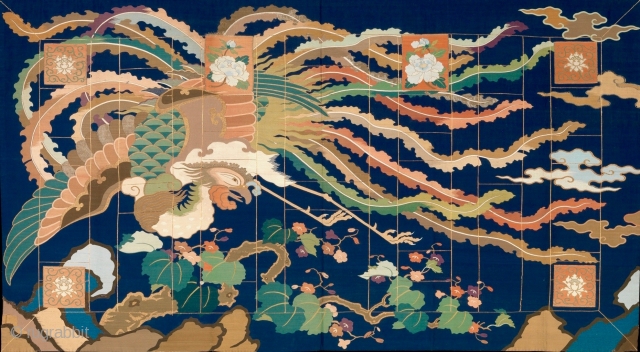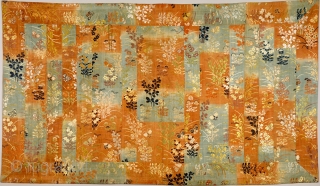Back
Virtual Lecture Program: "Kesa: `Patchwork’ Buddhist Monks’ Robes in Japan, from Austere to Luxurious" with Alan Kennedy, Independent Researcher, Author and Asian Art Specialist, Los Angeles. *10 am* Pacific Standard Time, Saturday, February 27, 2021. Registration: https://zoom.us/webinar/register/1016111821732/WN_HaBZB0veSRm5MTns2ycKbw
Kesa* is the Japanese word for the traditional patchwork garment worn by Buddhist monks and nuns. These garments are among the earliest documented articles of clothing in Japan, based on inventory records dating to the 8th century. The history of kesa in Japan is of significance for both sacred and secular reasons. They served as a vehicle for both the transmission of Buddhism and of luxury textiles to Japan from the Asian mainland. Kesa that have been preserved in Japan are made of a wide variety of textiles, ranging from monochrome bast fiber textiles to sumptuous imported gold brocades. The lay Buddhist community has traditionally donated garments that belonged to family members, and these garments have been taken apart, cut into strips, and then sewn into Buddhist robes. Kesa are also handed down from master to disciple, and serve as a physical embodiment of the Buddhist teachings. This talk will survey kesa from its earliest history to modern times. (*Note – The Japanese word kesa is not to be confused with kesi, the Chinese word for silk tapestry-woven textiles.)
Since 1978, Alan Kennedy has specialized in Asian art, while living in Europe and the usa. His main areas of interest are Chinese and Japanese costumes, textiles and paintings. He was a student of the pioneering scholar, Schuyler van Rensselaer Cammann at the University of Pennsylvania, where he first learned how to look at and understand East Asian art. Mr. Kennedy’s research and writing has resulted in numerous publications and lectures all over the world. Publications include the book Japanese Costumes: History and Traditions, Paris, 1990; numerous articles in museum exhibition catalogues and scholarly journals; encyclopedia articles; book and exhibition reviews; and interviews. He has lectured at the Asia Society, New York; Cooper-Hewitt Museum, New York; Asian Art Museum, San Francisco; Oriental Rug and Textile Society, London; the Asian Art Museum in Berlin; and the Textile Society, Hong Kong, among other venues. Mr. Kennedy has sold works of art to over forty museums on four continents.
Zoom Registration link: https://zoom.us/webinar/register/1016111821732/WN_HaBZB0veSRm5MTns2ycKbw
the log-in link will automatically be sent to you, when you Register for the program. Contact: info@tmasc.org
- Home
- Antique Rugs by Region
- Category
- Profiles
- Post Items Free
- Albums
- Benaki Museum of Islamic Art
- Budapest: Ottoman Carpets
- Gulbenkian Museum
- Islamic Carpets. Brooklyn
- Islamic Textiles. Brooklyn
- Konya Museum: Rugs
- MKG, Hamburg
- MMA: Caucasian Carpets
- MMA: Mamluk Carpets
- MMA: Mughal Indian Carpets
- MMA: Ottoman Carpets
- MMA: Safavid Persian Carpets
- MMA: Turkmen Rugs
- McCoy Jones Kilims
- Ottoman textiles. Met
- Philadelphia Museum
- Rugs and Carpets: Berlin
- Seljuqs at the Met
- TIEM, Istanbul: Carpets
- V&A: Classical Carpets
- Vakiflar Carpets: Istanbul
- Baluch Rugs: Indianapolis
- Gallery Exhibitions
- Jaf an Exhibition
- Alberto Levi Gallery
- Andean Textile
- Christie's London: 2016
- Francesca Galloway
- HALI at 40
- ICOC Washington, DC 2018
- Jajims of the Shahsavan
- London Islamic Week April, 2018
- Mongolian Felts
- Navajo Rugs: JB Moore
- Persian Piled Weavings
- SF Tribal & Textile Art Show 2020
- SF Tribal 2019
- Sotheby's: C. Alexander
- Turkish Prayer Rugs
- Turkmen Main Carpets ICOC 2007











